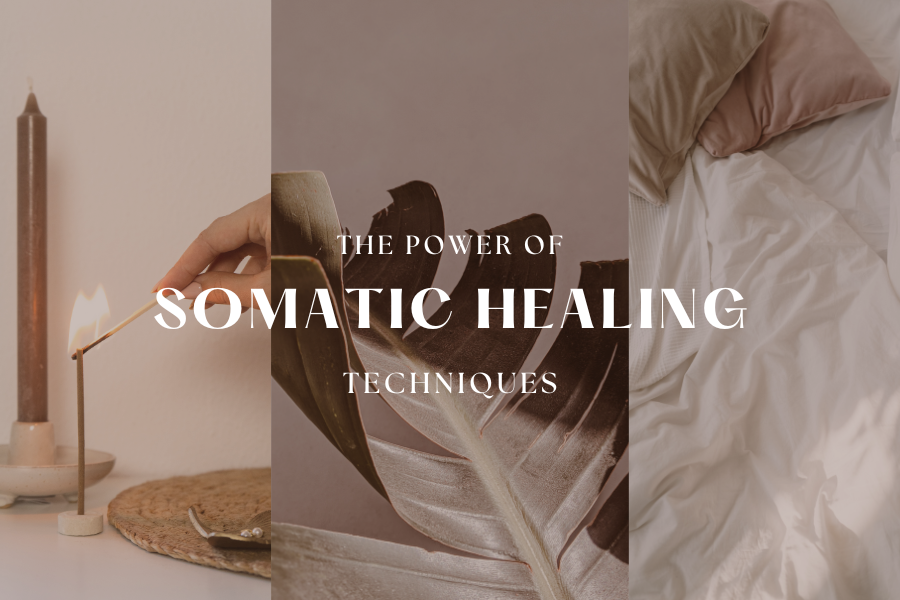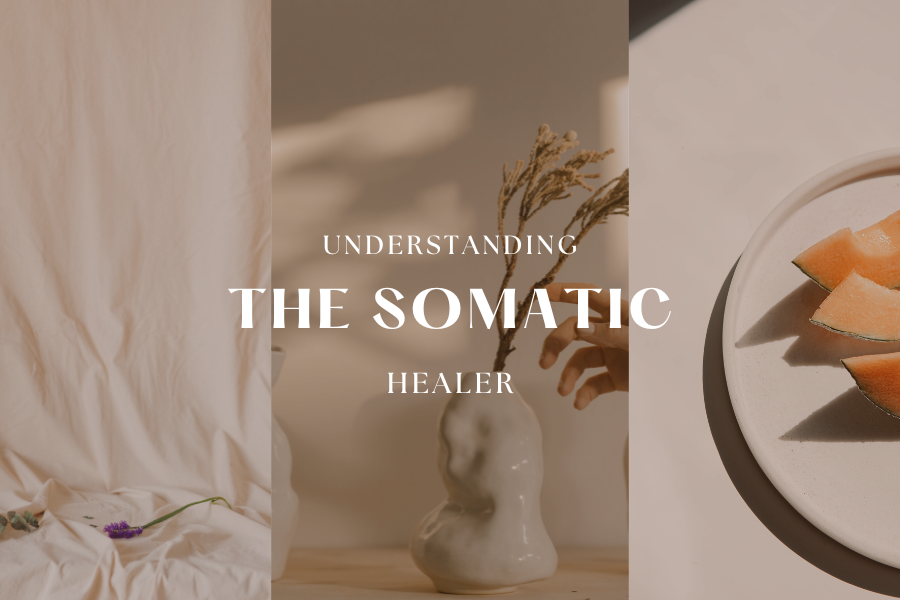Exploring Somatic Healing: Nurturing Mind-Body Connection for Holistic Well-being
Are you interested in learning about somatic healing? This article will dive into the benefits and healing properties of the mind-body connection.

In today’s rapidly moving world, it’s no surprise that stress, trauma, and emotional challenges can profoundly affect our well-being. This is where somatic healing comes in, offering a truly unique approach to address these issues by focusing on the powerful mind-body connection. By diligently acknowledging and addressing the physical sensations within our bodies, somatic healing aims to gently release tension, restore harmony, and foster deep healing from within.
This article explores the concept of somatic healing, the role of a somatic healer, various somatic exercises, and ways to incorporate somatic healing into your self-care routine. Additionally, we’ll delve into the path of becoming a somatic therapist for those interested in pursuing this rewarding career.
Somatic Release: Unleashing the Body’s Wisdom
In the quest for personal growth and self-discovery, we often focus solely on the power of our minds. However, what if I told you that our bodies also hold a wealth of wisdom and untapped potential?
Somatic Release is a transformative practice that invites us to reconnect with our bodies and tap into their innate wisdom. It is a gentle yet powerful approach that allows us to release stored emotions, trauma, and stress that may have become trapped within our physical selves.
Through somatic techniques such as breathwork, mindful movement, and body awareness practices, we can cultivate a deeper understanding of our bodies and the signals they constantly send us. By listening to these signals, we can gain valuable insights into our emotional well-being and create a more harmonious balance between our minds and bodies.
For instance, when we experience stress, trauma, or emotional challenges, our bodies often respond by activating the fight-flight-freeze response. However, if these responses are not fully discharged or processed at the time of the event, they can become trapped within our nervous system and musculature, leading to chronic tension and physical symptoms.
Somatic release techniques aim to facilitate the discharge of this stored energy, allowing individuals to release and heal from past experiences. By engaging with the body’s physical sensations, somatic release supports the integration of fragmented aspects of our experiences, leading to a greater sense of wholeness and well-being.
Here are a few key aspects of somatic release:
- Body Sensations: Somatic release involves tuning into the body’s sensations and becoming aware of any areas of tension, discomfort, or holding patterns. This process often starts with gentle inquiry, where individuals learn to observe and describe their bodily experiences without judgment. By paying attention to sensations, such as tightness, heaviness, tingling, or heat, individuals begin to establish a deeper connection with their bodies.
- Pendulation: Pendulation is a central concept in somatic release. It involves moving back and forth between sensations of ease or comfort and sensations of tension or discomfort. By oscillating between these different experiences, individuals can gradually expand their capacity to tolerate and regulate difficult sensations. This process supports the gradual release and integration of stored energy and emotions.
- Tracking and Resourcing: Tracking refers to the practice of attentively following the body’s sensations and subtle shifts that occur during somatic release. It involves noticing any changes in tension, temperature, or movement. Resourcing refers to intentionally accessing and drawing upon internal or external resources to provide support during the release process. These resources can include positive memories, a sense of safety, supportive relationships, or grounding techniques. Tracking and resourcing help individuals stay present and grounded during moments of intensity, ensuring a safe and regulated process.
- Gentle Movements and Shaking: Somatic release often incorporates gentle movements and shaking to facilitate the discharge of stored energy. These movements can range from slow, intentional stretches to more spontaneous, instinctual tremors and shaking. By allowing the body to move in a way that feels natural, individuals can release muscular tension and promote the flow of energy through their system.
- Regulation and Integration: Somatic release is a gradual process that aims to regulate the nervous system and support integration of fragmented experiences. The release of stored energy may lead to the emergence of emotions, memories, or insights. Somatic healers provide guidance and support during this process, helping individuals navigate any intense or overwhelming sensations. The ultimate goal is to foster a sense of integration, where individuals feel more connected to their bodies, emotions, and inner resources.
Somatic release can be experienced both in individual sessions with a somatic healer and in personal somatic practices. By engaging with these techniques, individuals can initiate the healing process, release tension, promote emotional well-being, and cultivate a deeper sense of self-awareness and resilience.
Understanding the Somatic Healer

A somatic healer is a highly trained professional who compassionately guides individuals on their somatic healing journey. These dedicated practitioners possess an extraordinary ability to understand and interpret bodily sensations and patterns in order to facilitate profound healing experiences. By creating a safe and nurturing environment, somatic healers help clients explore and release deep-seated emotions, trauma, and stress that may be stored within their bodies. Through their unwavering support and empathy, somatic healers assist individuals in strengthening their connection with their own bodies, fostering self-awareness, and promoting holistic well-being.
Here are some tips to help you find a qualified somatic healer:
- Research and Gather Information: Start by researching somatic healing and its various modalities. Familiarize yourself with different approaches, such as Somatic Experiencing, Hakomi, or Body-Mind Centering. Understand the principles and techniques associated with each modality to determine which resonates with you.
- Seek Recommendations: Reach out to trusted friends, family members, or healthcare professionals who may have experience or knowledge of somatic healers. Personal recommendations can provide valuable insights and help you find practitioners who have a good reputation and track record.
- Professional Associations and Directories: Explore professional associations and directories that specialize in somatic healing or body-oriented therapies. Examples include the Somatic Experiencing Trauma Institute, United States Association for Body Psychotherapy, or the International Somatic Movement Education and Therapy Association. These resources often provide directories of certified practitioners.
- Online Search: Conduct an online search for somatic healers or therapists in your area. Read their websites, biographies, and any testimonials or reviews available. Pay attention to their qualifications, certifications, years of experience, and areas of specialization. Look for practitioners who align with your specific needs and concerns.
- Initial Consultations: Many somatic healers offer initial consultations or discovery sessions to explore whether their approach and expertise are a good fit for your needs. Take advantage of these consultations to ask questions, discuss your goals, and gauge the practitioner’s approach, communication style, and level of comfort. Trust your intuition and ensure that you feel safe and supported in their presence.
- Referrals from Other Therapists: If you are already working with a therapist or mental health professional, inquire if they can provide recommendations for somatic healers. Therapists often have professional networks and may be familiar with practitioners specializing in somatic work.
- Credentials and Training: When considering a somatic healer, look for their credentials and training. They should have completed reputable and accredited somatic therapy programs or trainings. Additionally, consider practitioners who engage in ongoing professional development and supervision to ensure they stay up-to-date with current practices and ethical standards.
- Compatibility and Connection: Building a trusting relationship with your somatic healer is crucial. Pay attention to how you feel when interacting with them. Do you feel heard, understood, and respected? Consider their ability to create a safe and non-judgmental space for your healing journey. The therapeutic relationship is an important factor in the effectiveness of somatic healing.
- Cost and Accessibility: Consider your budget and any financial constraints. Somatic healing sessions can vary in cost, so it’s essential to discuss fees and insurance coverage upfront. Additionally, consider the location, availability of remote sessions, or any accessibility requirements you may have.
Remember that finding the right somatic healer is a personal process, and it’s essential to find someone who resonates with you and makes you feel comfortable. Take your time, trust your instincts, and prioritize your well-being as you embark on your somatic healing journey.
Somatic Exercises: Nurturing the Mind-Body Connection

Somatic exercises form an integral part of somatic healing. These exercises help individuals become more attuned to their bodily sensations, promoting self-regulation and healing. Some commonly practiced somatic exercises include:
- Body scans: This exercise involves systematically focusing attention on different parts of the body, noticing any physical sensations, tension, or discomfort. By bringing awareness to these areas, individuals can begin to release tension and promote relaxation.
- Somatic experiencing: Developed by Dr. Peter Levine, somatic experiencing aims to release trauma stored within the body. Through gentle movements and awareness of bodily sensations, this practice allows individuals to renegotiate past traumatic experiences, fostering resilience and healing.
- Breathwork: Conscious breathing techniques play a vital role in somatic healing. By focusing on the breath, individuals can regulate their nervous system, reduce stress, and cultivate a sense of grounding and presence in the body.
Somatic Healing on Yourself: A Guide to Self-Care
While working with a trained somatic healer can be immensely beneficial, there are also practices you can incorporate into your self-care routine. Here are some ways to engage in somatic healing on your own:
- Body awareness: Take moments throughout the day to check in with your body. Notice any areas of tension, discomfort, or holding patterns. Simply acknowledging these sensations can initiate the process of somatic release.
- Gentle movement: Engage in gentle exercises such as yoga, tai chi, or dance to promote body-mind connection. Focus on the sensations and movements, allowing your body to guide you towards release and relaxation.
- Breathwork and meditation: Dedicate time to mindful breathing and meditation practices. This cultivates present-moment awareness and supports the release of stored emotions and tension.
Becoming a Somatic Therapist: A Path to Facilitating Healing
For those interested in pursuing a career in somatic healing, becoming a somatic therapist can be a rewarding choice. Here are some steps to embark on this professional path:
- Education and training: Research and enroll in accredited somatic therapy programs. These programs typically combine theoretical knowledge, practical skills, and supervised clinical experience to equip you with the necessary expertise.
- Personal exploration: Engage in your own somatic healing journey to deepen your understanding of the process. This personal exploration enhances your capacity for empathy and provides valuable insights into the client’s experience.
- Supervision and certification: Seek out opportunities for clinical supervision and pursue certification from recognized somatic therapy organizations. These steps validate your competence and enhance your professional standing.
- Continued learning: Stay abreast of advancements in the field through workshops, conferences, and ongoing education. Somatic therapy is a dynamic field, and continued learning ensures that you provide the best care to your clients.
Somatic healing offers a powerful pathway to holistic well-being by honoring the connection between the mind and body. Through somatic release, the guidance of a somatic healer, and dedicated self-care practices, individuals can tap into their body’s innate wisdom and promote healing. For those inspired to embark on a career in somatic therapy, thorough training, personal exploration, and ongoing education are key to becoming a compassionate and effective practitioner. Ultimately, somatic healing invites us to cultivate self-awareness, resilience, and a profound sense of wholeness.





